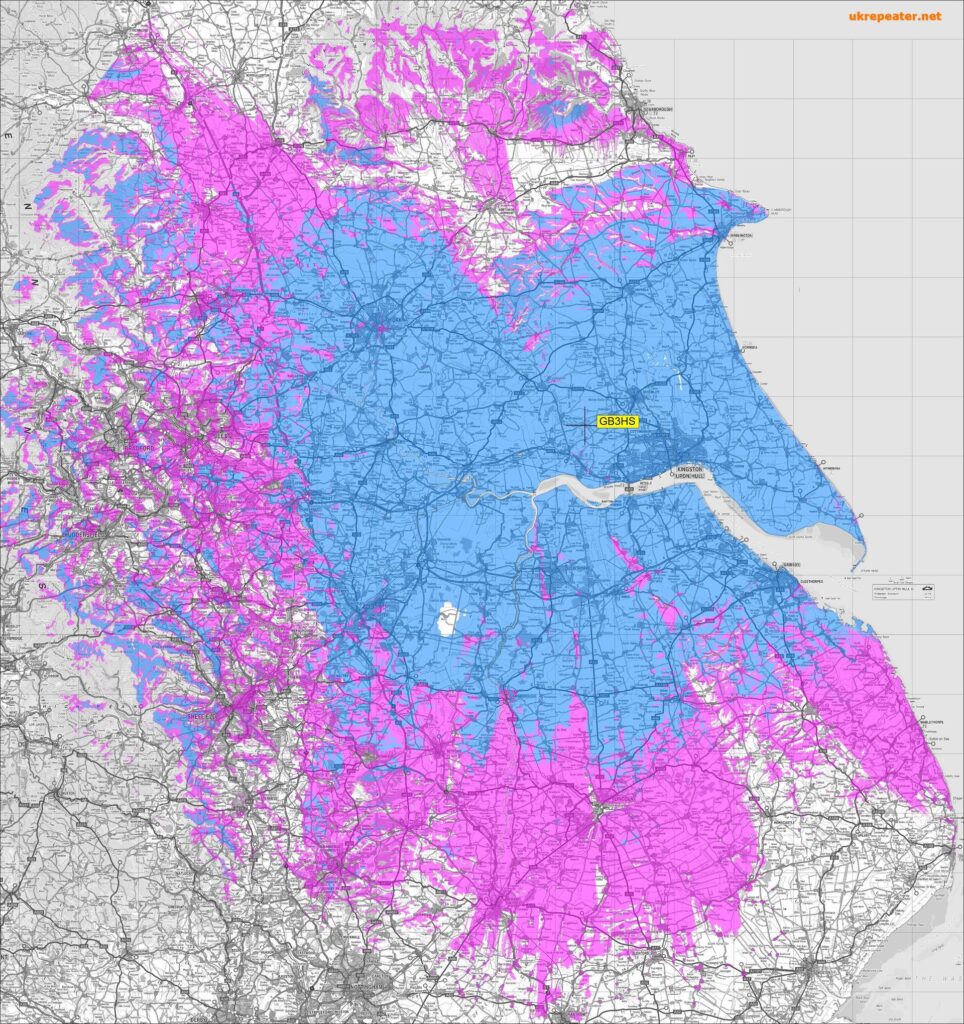
Quick details
| Channel | RV52 |
| Output / Input frequencies | 145.650MHz / 145.050MHz |
| CTCSS Tone | Tone E 88.5Hz |
| Modes | 12.5kHz spacing FM and Fusion DV |
| Location | Cave Wold Radio Station Riplingham, E. Yorkshire |
| Locator | IO93RS37 |
| Power | 25W E.R.P. |
| Antenna | Folded dipole @ 22m AGL, site 155m ASL |
| Equipment | Yaesu DR-1Xe |
| Status | On-air 1300 – 2200 local |
History
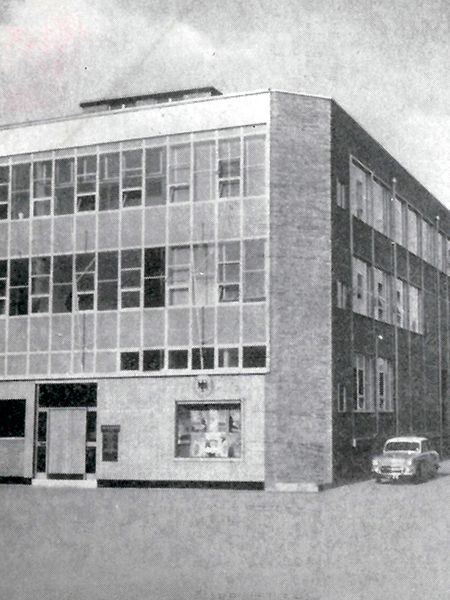
The repeater was first located on the top of the now demolished John Good & Sons office building at the bottom of High Street, Hull adjacent to the Myton Bridge. A couple of years later it was moved to High Hunsley which offered much better coverage. It was housed in a shed adjacent to a three section tower. The cavity filters were home made and housed in an insulated tea chest that had a heater to maintain a constant temperature. The repeater was often subject to interference caused by a fourth-order mix with the nearby Band II transmitter on 96.9MHz. By an unhappy coincidence, the third harmonic of the nearby Band II transmitter on 290.7MHz when mixed with the repeater’s output frequency of 145.65MHz produced the repeater’s input frequency of 145.05MHz. When the deviation of the Band II transmitter was low the programme material could be heard through the repeater once accessed. This was deemed to be caused a rectifying metal to metal contact, but it was never traced.
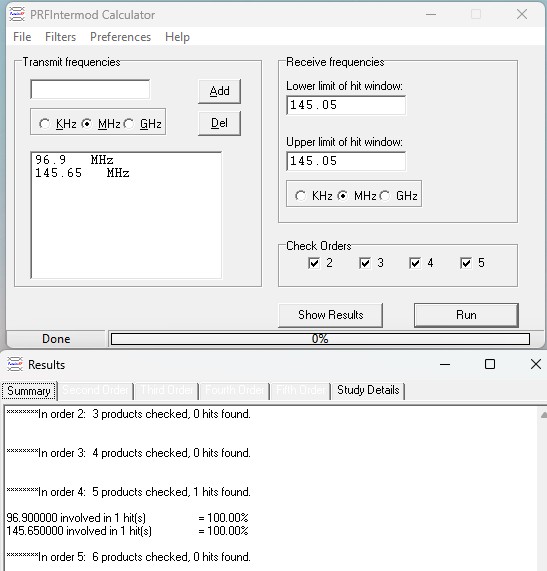
The repeater remained at this site until 1997 when on Boxing Day a gale caused the third section to bend over following the failure of a guy wire. Unfortunately the site owner as not prepared to allow the tower to remain as it was located adjacent to one of his stables. The remains of the tower had to be cut whilst embedded in a tree with an angle grinder, with access via a three section ladder, and then lowered on ropes. The useable parts of the tower were recovered, including the ground post, and were incorporated into a four section tower that would be used at the repeater’s third home.
A disused Pye Telecom site adjacent to BT’s Cave Wold Radio Station was found by John G1SRJ who knew the farmer on those land it was situated. It was in a derelict state with nettles growing to shoulder height, no fencing and a decrepit guyed mast that defied gravity by way of a miracle. The mast was brought down and the site cleared of trees, overgrown hawthorn hedging and rubble. The steel hut was cleared out and a security fence erected around the whole compound with a large gate for vehicle access. A JCB was used to dig a large hole for the ground post and set in concrete. Four large stakes were made with tabs welded on them to form anchors for the guys that were placed at the top of the tower and about half way up. The tower was lifted onto the ground post and then winches were fitted for raising and luffing the tower. Luffing was manually winched and raising was motorised using a 30V / 4A DC motor via a reduction gear and worm drive. The tower was extended using a 6m aluminium scaffold pole braced with three guys giving an additional 5m of height. The scaffold pole was fitted with two welded cross-pieces to mount the antennas.
The inside of the hut was insulated and lined with plywood. A mains supply was installed providing eight double 13A sockets. Cabinets and racking housed a total of four repeaters; in addition to HS, site housed GB3HU 70cm FM and two television repeaters GB3VW and GB3XY. With the tea chest holding the 2m cavities it was rather crowded in the six feet square hut. A lot of the early site preparation work and sourcing of materials was carried out by Richard G7MFO, to whom the Group is indebted.
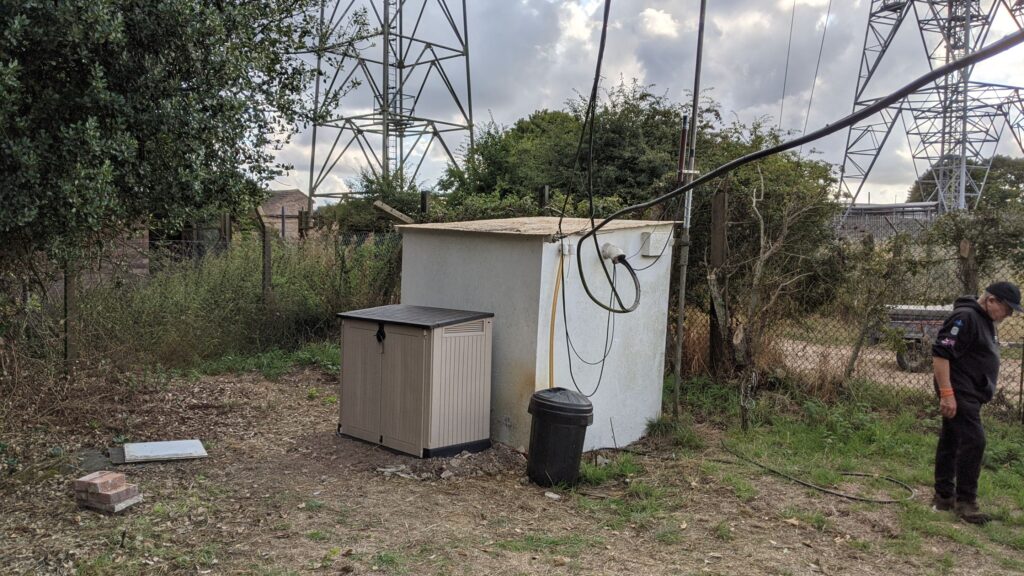
Initial results on 2m showed that the site performed almost as well as High Hunsley, but after a while HS developed a crackle whenever the wind blew more than a light breeze. Several things were tried to fix this, but none were effective long term. What was particularly strange was that if the tower was lowered the problem would abate for a week or two, so it was concluded that it was caused by the rusty bolt effect between sections of the tower. A newsletter dated 2000 reported on the problem so it had been evident early on. However, the site was far enough away from the Band II transmitter for the fourth order mix to be a problem.
The repeater was by then using a Philips PRF10 PMR base unit with logic designed by Bill G3RMX, with the top colinear used for receive and another 3m lower for transmit. The antennas were changed for folded dipoles based on the thought that the internal dissimilar metal to metal contacts in the co-linears were causing the crackle, but no improvement was forthcoming.
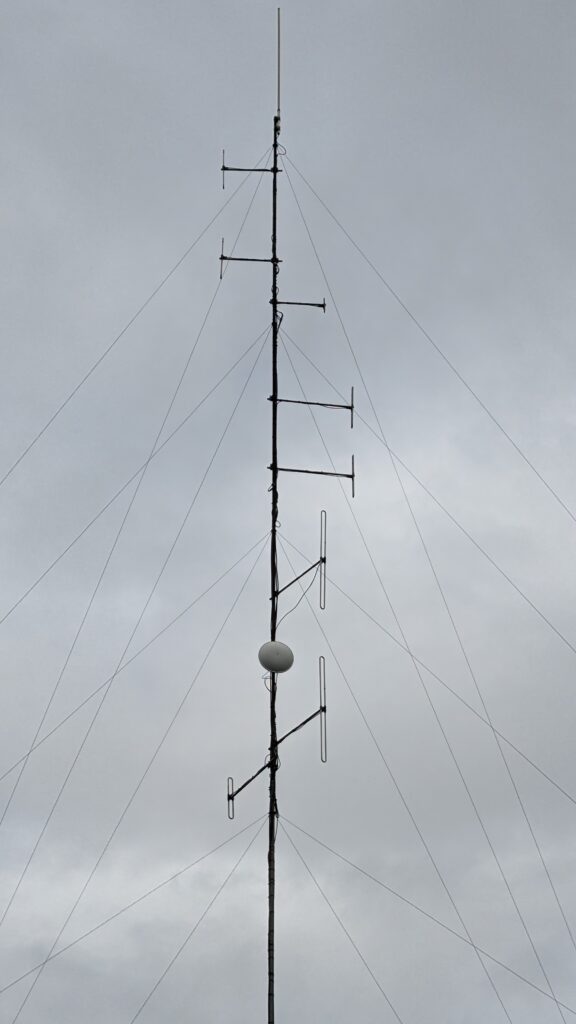
An opportunity arose to move HS back to High Hunsley, this time as the guest of the company running the PMR site on the opposite side of the farm from where the Group had their tower in the 90s. Sam Hunt of Maxxwave Ltd. sourced some commercial grade cavities for HS so that it could use a pair of phased mid-band dipoles as a single antenna. The change of site immediately fixed the crackle that was so much a fixture of using HS at Cave Wold.
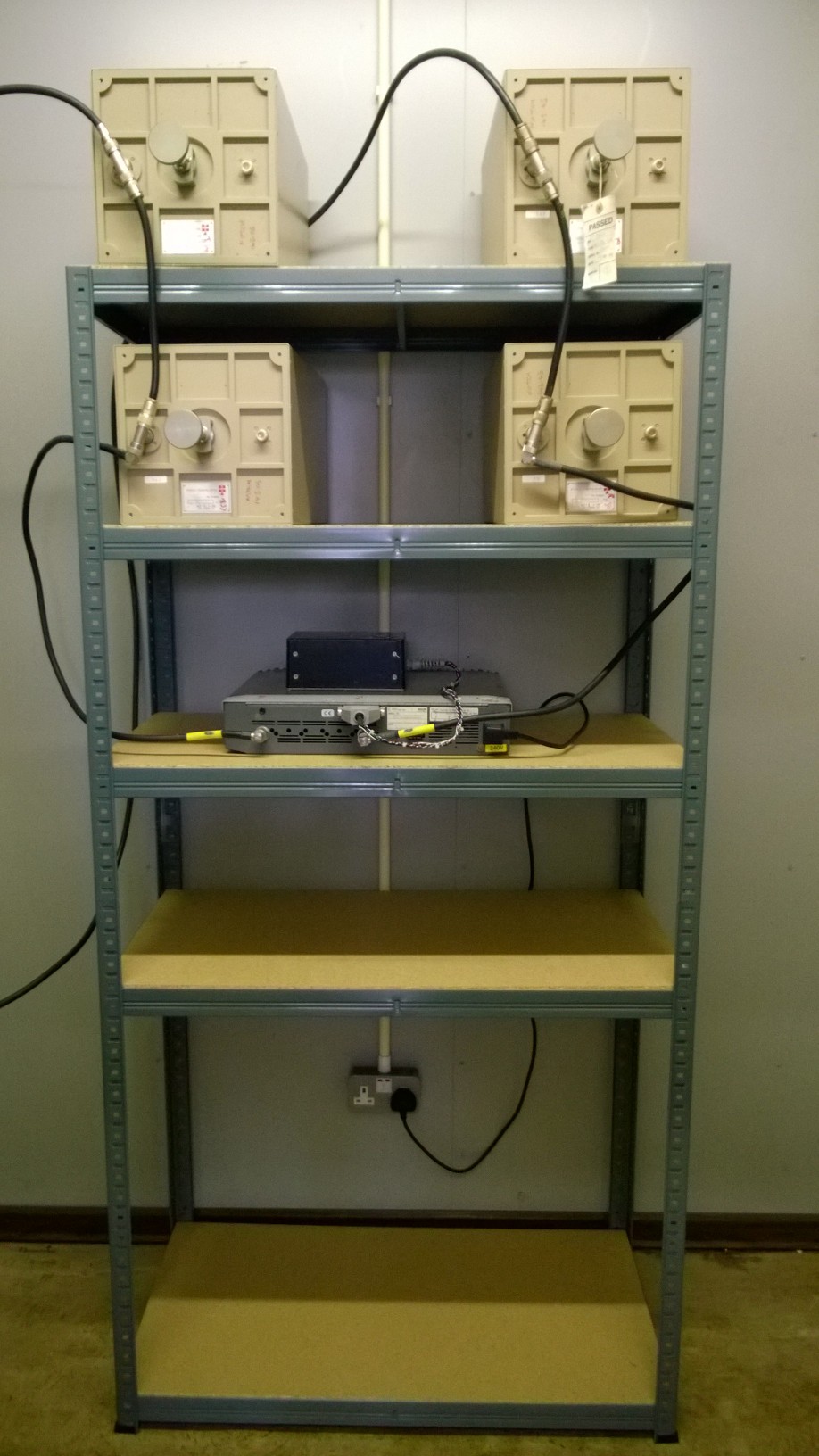
On 27 January 2015, the East Yorkshire Repeater Group took delivery of a Yaesu DR-1XE repeater kindly sponsored by LAM Communications of Barnsley as part of a promotion they were running to increase interest in the Yaesu proprietary digital voice system known as Fusion. The results were much better sensitivity and far superior audio quality although the strange logic took some getting used to.

Expansion of the PMR services by this time meant that HS shared an antenna, which allowed HS to remain at the site. The additional filtering seen below made very little difference to the repeater’s performance.
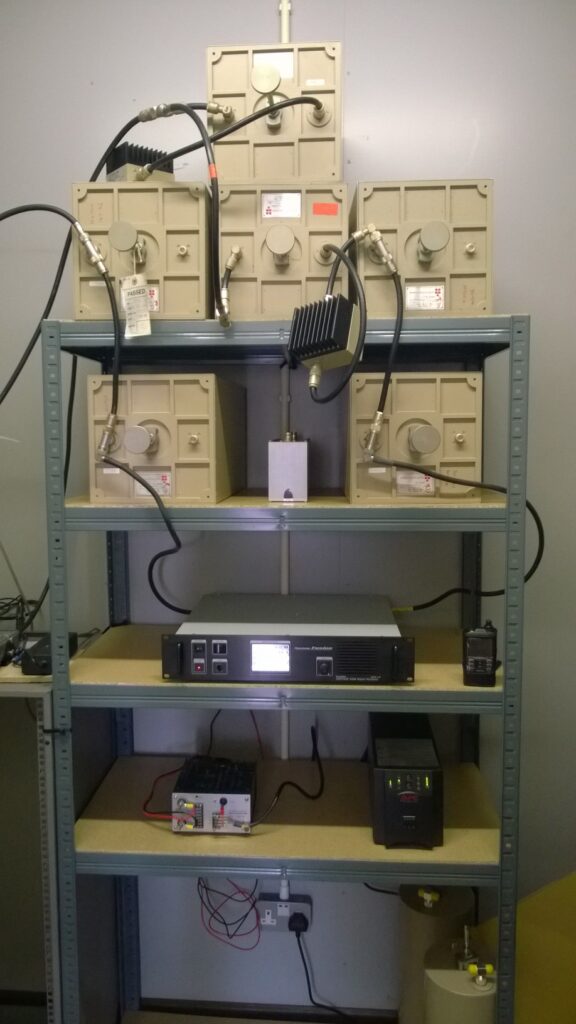
However, the downside was that after a couple of years a faulty Band III antenna at the top of the 30m guyed mast developed an intermittent fault that caused the same fourth order mix interference experienced in the 90s at High Hunsley.
As there was no prospect of getting a cherry picker to reach the faulty antenna at 30m, it was decided to move HS back to Cave Wold, but this time with a single antenna for transmit and receive. As part of the move, the Westflex103 feeders were to be replaced on all the antennas at Cave Wold.

The same coax had been sourced as a replacement, but it was not fitted because on inspection it was found that the copper foil shielding in the original feeder had broken into small segments, 7 to 10cm long throughout the length of the feeder. Now the Group had, at last, an answer to the crackle as clearly, when the cable was flexed by the wind, the segmented copper shield was causing intermittent connections as it was not bonded adequately by the “>40%” coverage copper braid used.
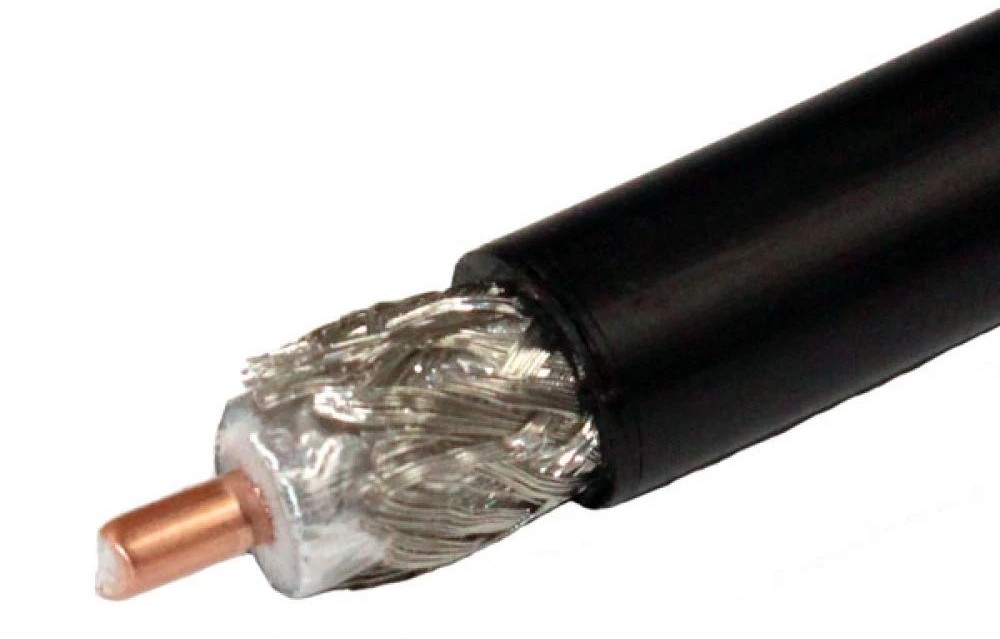
The new Westflex was discarded and LLA-400, a Times LMR-400 equivalent, with crimp N-type connections from CCS in Harlow was installed on all four 25m runs from the antennas to the hut. The new cable used a flexible aluminium foil backed onto a plastic base and then covered with a 95% coverage tinned copper wire braid, so it was less likely to fracture and if it did the 95% coverage braid would ensure continuity of the shield. To date, the new cables have performed perfectly.
